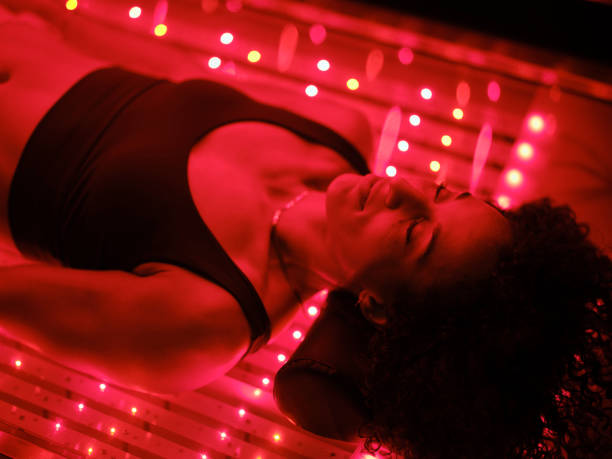The Glow-Up: How Red Light Therapy Transforms Skin Quality
In the ever-evolving world of skin care and aesthetic medicine, red light therapy has emerged as a groundbreaking tool in the realm of cosmetic dermatology. With its ability to rejuvenate, repair, and refresh, this therapy is quickly becoming a staple for anyone looking to enhance their skin quality. Let’s delve into the science behind this phenomenon and explore how it can revolutionize your skincare routine.
Understanding Red Light Therapy
Red light therapy (RLT) uses low-level wavelengths of red or near-infrared light to penetrate the skin, targeting various layers with therapeutic effects. This non-invasive treatment harnesses the power of light to stimulate cellular processes, promoting healing and rejuvenation.
The Science Behind the Glow
At its core, red light therapy works by enhancing cellular energy production. The light penetrates the skin and is absorbed by mitochondria, the energy powerhouses within cells. This absorption boosts ATP (adenosine triphosphate) production, which in turn accelerates cellular repair and regeneration.
In the context of cosmetic dermatology, this means that red light therapy can improve skin texture, reduce wrinkles, and enhance overall skin quality. It stimulates collagen production, which is crucial for maintaining skin elasticity and firmness. As we age, our natural collagen production slows down, leading to the formation of fine lines and wrinkles. Red light therapy helps counteract these effects by encouraging the body to produce more collagen.
Benefits for Skin Quality
1. Reduction in Fine Lines and Wrinkles: By stimulating collagen production, red light therapy helps to smooth out fine lines and wrinkles, giving your skin a more youthful appearance.
2. Enhanced Skin Tone and Texture: The therapy can reduce the appearance of blemishes and uneven skin tone. It promotes faster healing of acne scars and minimizes redness and inflammation.
3. Increased Hydration: Red light therapy helps improve skin hydration by boosting blood circulation. Enhanced blood flow delivers more nutrients to the skin, resulting in a more radiant and plump appearance.
4. Enhanced Wound Healing: For those dealing with skin issues such as scars or post-surgical wounds, red light therapy accelerates healing and reduces the appearance of scars.
Incorporating Red Light Therapy into Your Routine
Red light therapy can be easily integrated into your skincare regimen. Many cosmetic dermatology clinics offer red light therapy sessions as part of their treatments, but there are also at-home devices available for those who prefer a more convenient option.
When using red light therapy at home, consistency is key. Regular sessions, typically ranging from 10 to 20 minutes a few times a week, can yield noticeable improvements in skin quality over time.
Aesthetic Medicine and Future Trends
As the field of aesthetic medicine continues to advance, red light therapy is likely to become even more refined and effective. Innovations in technology may lead to more targeted treatments and enhanced results. For now, it stands as a testament to how combining technology with dermatology can yield remarkable improvements in skin care.
Conclusion
Red light therapy represents a significant advancement in cosmetic dermatology, offering a non-invasive, effective solution for enhancing skin quality. Whether you’re aiming to reduce signs of aging, improve skin tone, or speed up healing, this therapy provides a versatile approach to achieving a healthier, more radiant complexion. As always, consulting with a dermatologist or skincare professional can help tailor the therapy to your specific needs and ensure you get the most out of this revolutionary treatment.
In the quest for flawless skin, red light therapy shines brightly as a beacon of hope, guiding us toward a future where radiant, youthful skin is within everyone’s reach.ducing Block Patterns
